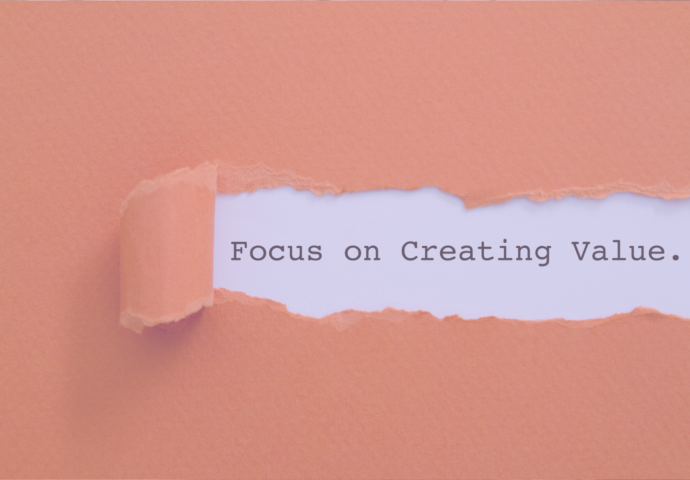My Biggest Lessons Learned from a Decade in Fintech Marketing

And what I want you to learn from them
Since I first entered the world of fintech marketing in 2012 (as an early employee at SoFi), I’ve witnessed dozens of startups learning the same two lessons over and over and over again.
Lesson 1: Winning over customers via paid ads is hard when you’re a growth-stage startup. It’s expensive to compete with traditional institutions and well-funded startups who can shell out a lot of money for ad space. Getting premium placement in Google search, on website banners, or billboards is rarely a good use of limited marketing budgets or your team’s time.
If you – or your first marketing hire – aren’t familiar with these platforms, you can waste *a lot* of time navigating different ad manager platforms and making sure you ads meet their specs.
And once you get up to speed, they’ll probably change something.
And if you don’t know what to look for in their analytics, you’ll struggle to optimize the ads you have.
Paid ads are hard to do well without breaking the bank (and the spirits of your early employees).
Now, I’m not saying you shouldn’t experiment with paid ads. But, if you’re going to do them, I highly recommend outsourcing to an expert (I really like Tuff, myself). These folks really know how to create compelling ads and navigate the complexities of all the ad management platforms. I’ve found that startups have a tendency of undervaluing the time of their internal hires while hesitating to spend money on internal experts and tools. But if a hiring a freelancer for 4k a month gives your 150K (+benefits) marketing hire back 40 hours a month, IT IS WORTH IT – and that’s before assuming you’ll get better results from someone with greater expertise.
Another challenge with paid ads is that you don’t get a lot of copy in these formats to tell your story, detail the value of your offerings, or introduce yourself. You’re limited by character counts and pixels, and you often have to choose between being quippy and attention-grabbing with being clear about what you actually do. At SoFi I had to argue for putting “We Refinance Student Loans” on our Muni bus ads instead of something more eye catching.
My argument was that in 2013, refinancing student loans was a relatively new phenomenon. People knew they could refinance mortgages, but not their college debt, so we needed to educate before we tried to sell them on brand personality. I ultimately won this battle, and these ads ran the streets of downtown San Francisco for nearly a year.
Lesson 2: Selling someone on a new financial product or service is a multi-touch process – especially when you are an unknown company or a category creator. You will rarely make a sale or get a sign-up on first introduction, first ad serve, first website visit, no matter how great your copy is.
Yes, I buy things from the first instagram ad I see for a scarf, a pair of sunglasses, a new moisturizer. But that’s not what you are selling.
Unlike spending $30 on a pair of sunglasses that can be returned, buying a financial product or service feels (and often is) risky. People are worried about making the wrong decision. They are wary of connecting their bank information (yes, even through Plaid). They are nervous about loosing money and putting the stability of their life – and that of their family – at risk. They are, understandably, tentative buyers.
So, you have to build their trust. They need to get to know you. They need to feel good about choosing your company and your solution. The need to be convinced they aren’t making a bad decision.
Lesson 3: They talk too much about *what* they do – and not enough about *why* they do it.
When you’re in the early stages of building a company, you spend a lot of time on customer research. You’re trying to determine product-market fit, what is your total addressable market, what problems to be solved for your customers, what will make VCs invest.
So, when it’s time to go-to-market, you’re armed with vetted value propositions, a catchy website tagline, and a good product or services landing page that explains how your product or service works. AND THIS IS IMPORTANT! But this isn’t where your marketing and messaging work should end.
As self-proclaimed optimist Simon Sinek said “People don’t buy what you do; they buy why you do it.”
And while my relentlessly practical self would argue you need both, I also believe that many fintech startups are losing out on growth because they fail to talk enough about their why.
This is a problem for two reasons.
One: Trust
Which we talked about in Lesson 2
Two: Because your “what” might change
Startups pivot *all* the time. It is a part of the process. Even the best market research can’t tell you how real customers will react once your solution is in the wild.
So if all your marketing and messaging has been about *what* you do – and not *why* you do it, you have to throw out all of your messaging and start from scratch. And not only are you back at the starting line, you also have the burden of re-educating your existing audience about who you are and why they should care.
Ok, Arden, but what do these lessons mean for my fintech startup?
You’ve probably had people recommend content marketing to you – it’s good for SEO they say, you HAVE to have a blog they say, you need to spend more time on LinkedIn…
And I’m here to tell you they are (sort of) right.
I don’t believe that *every* startup is at the stage where they need to be focusing on content. And I’d be happy to argue about why SEO doesn’t break into my top 3 reasons for why founders and markets should invest in content.
But I do believe that creating and sharing content is critical for fintech startups who need to educate prospects on:
- The value of your product and what problems it solves
- How your product/services fits into their life / why it is right for them specifically
- Who you are, what you care about, and why
- Why they should trust you with their money or personal information
- Why now is the right time to buy/sign-up (staying top of mind is key)
And when your prospects are reminded of this information at the right time and in the right places, they will absolutely convert at higher rates.










